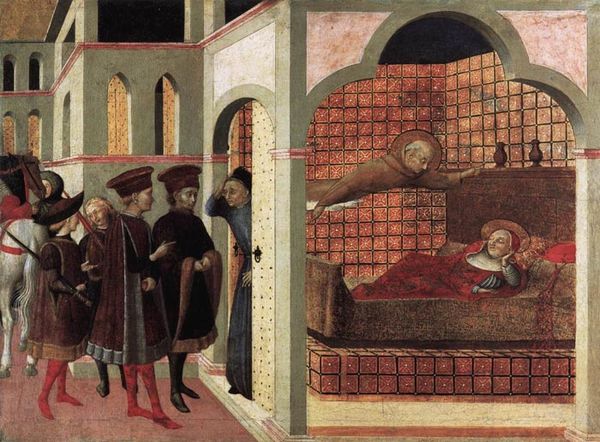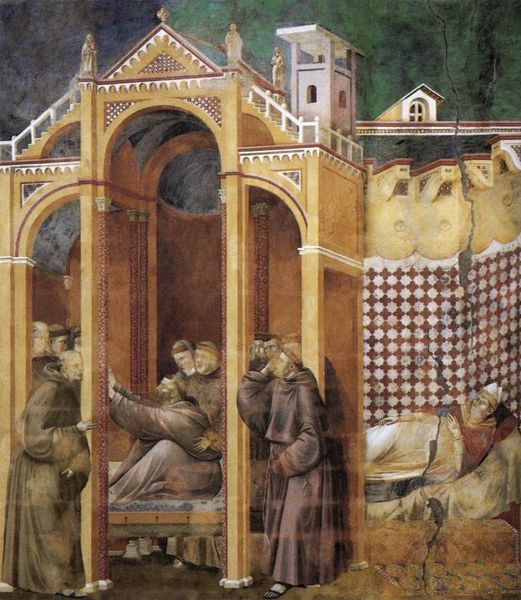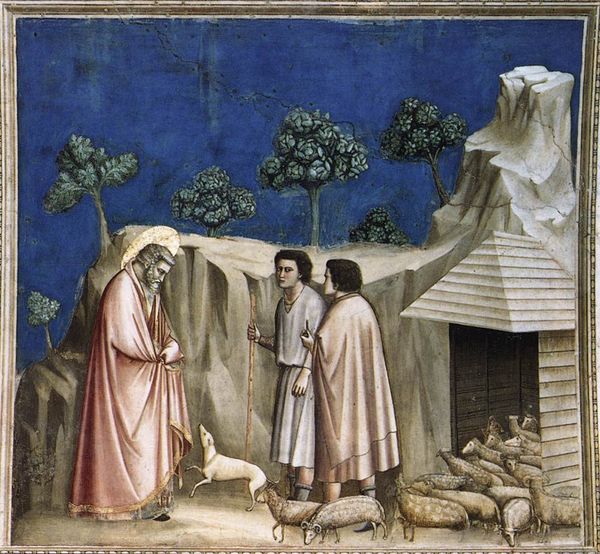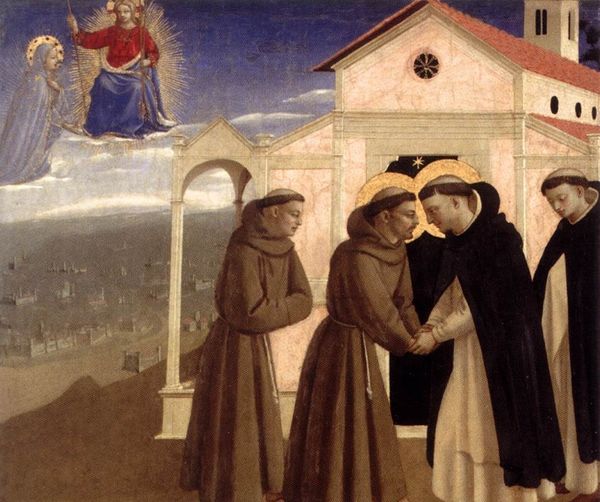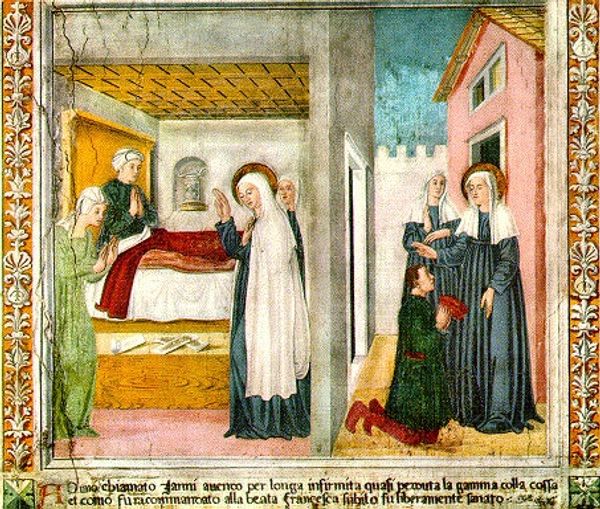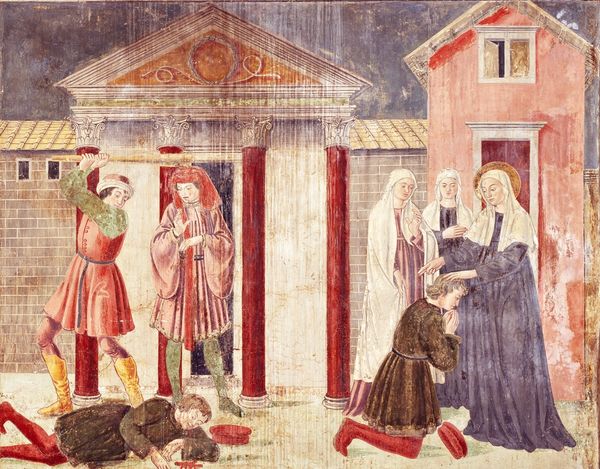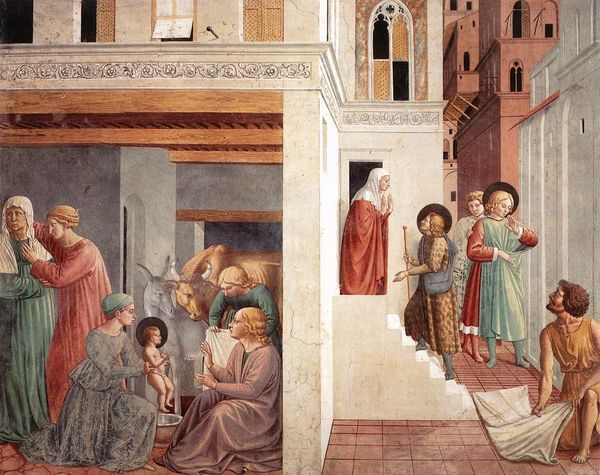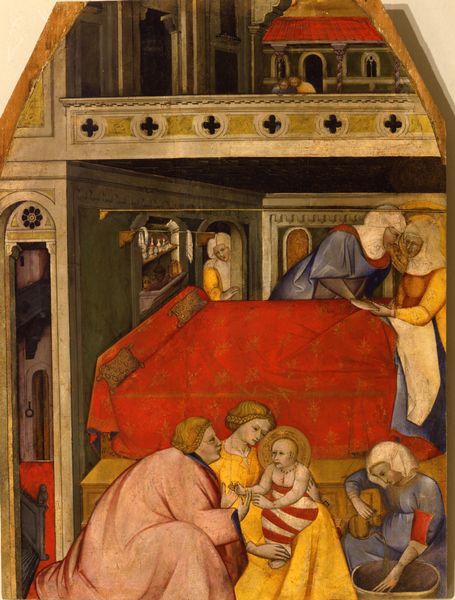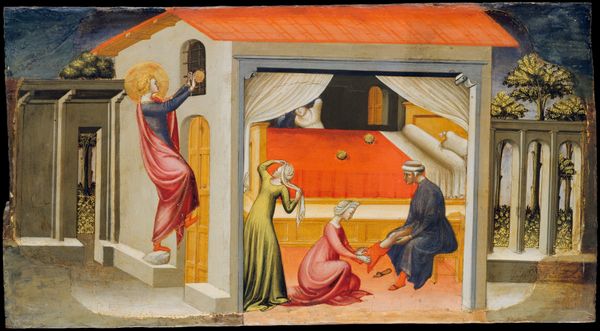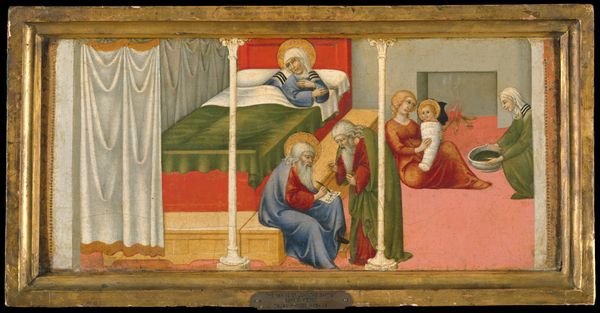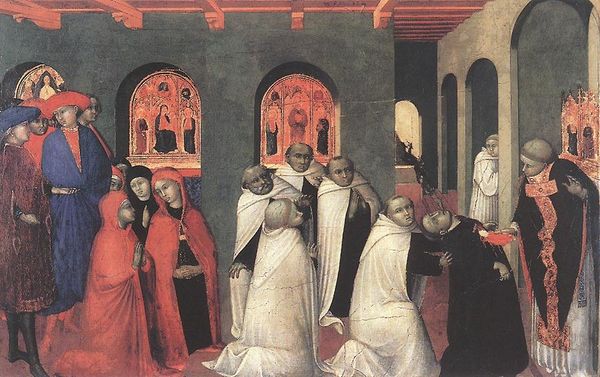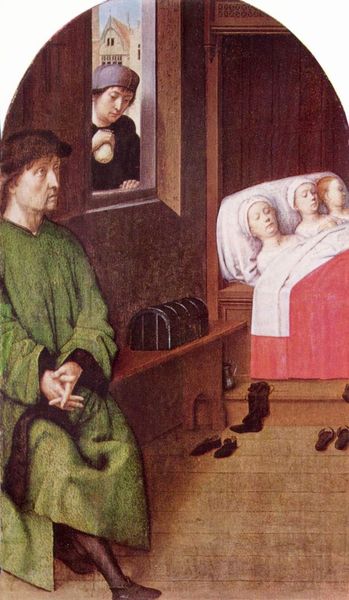
tempera, painting, fresco, architecture
#
medieval
#
narrative-art
#
tempera
#
painting
#
sienese-school
#
historic architecture
#
fresco
#
traditional architecture
#
history-painting
#
italian-renaissance
#
architecture
#
historical building
Copyright: Public domain
Pietro Lorenzetti painted "Beata Umiltà Heals a Sick Nun" in the 14th century with tempera on wood, a technique demanding precision and patience. Lorenzetti carefully applied layers of pigment mixed with egg yolk, building up color and detail slowly. Look closely, and you can see the subtle variations in tone, the delicate rendering of fabric, and the luminous gold leaf that illuminates the scene, all achieved through meticulous handwork. The use of tempera, a time-honored craft tradition, speaks to a pre-industrial world, where skill and artistry were valued above mass production. The painting is not just an image, but an artifact of labor. It embodies a commitment to craft, a slower, more deliberate way of making that invites contemplation and reverence. By understanding the materials and processes involved in its creation, we gain a deeper appreciation for the painting's meaning and its place in the history of both art and craft.
Comments
No comments
Be the first to comment and join the conversation on the ultimate creative platform.
